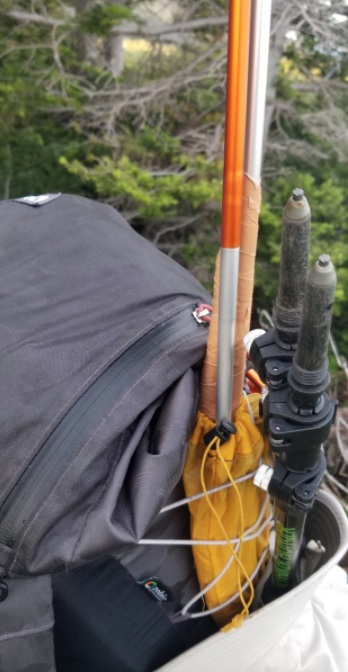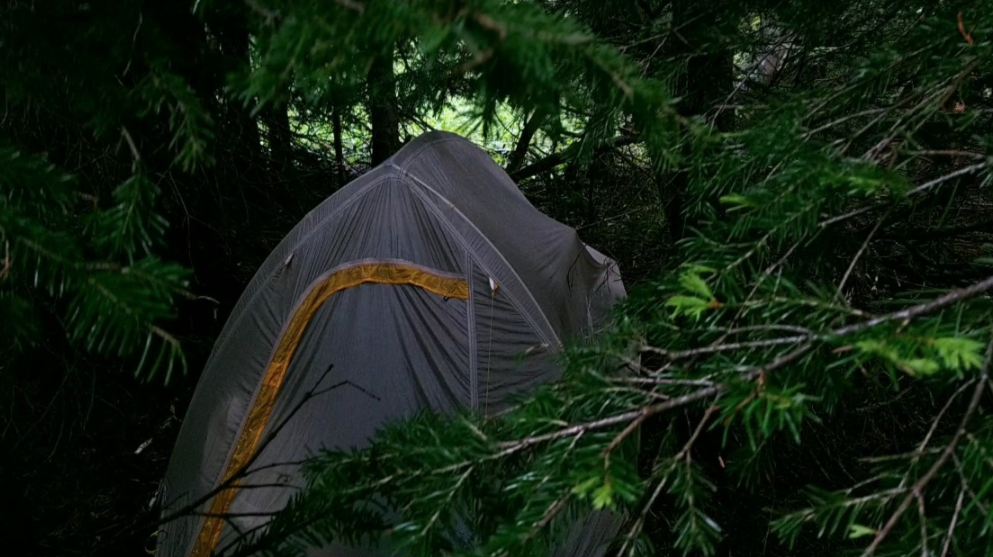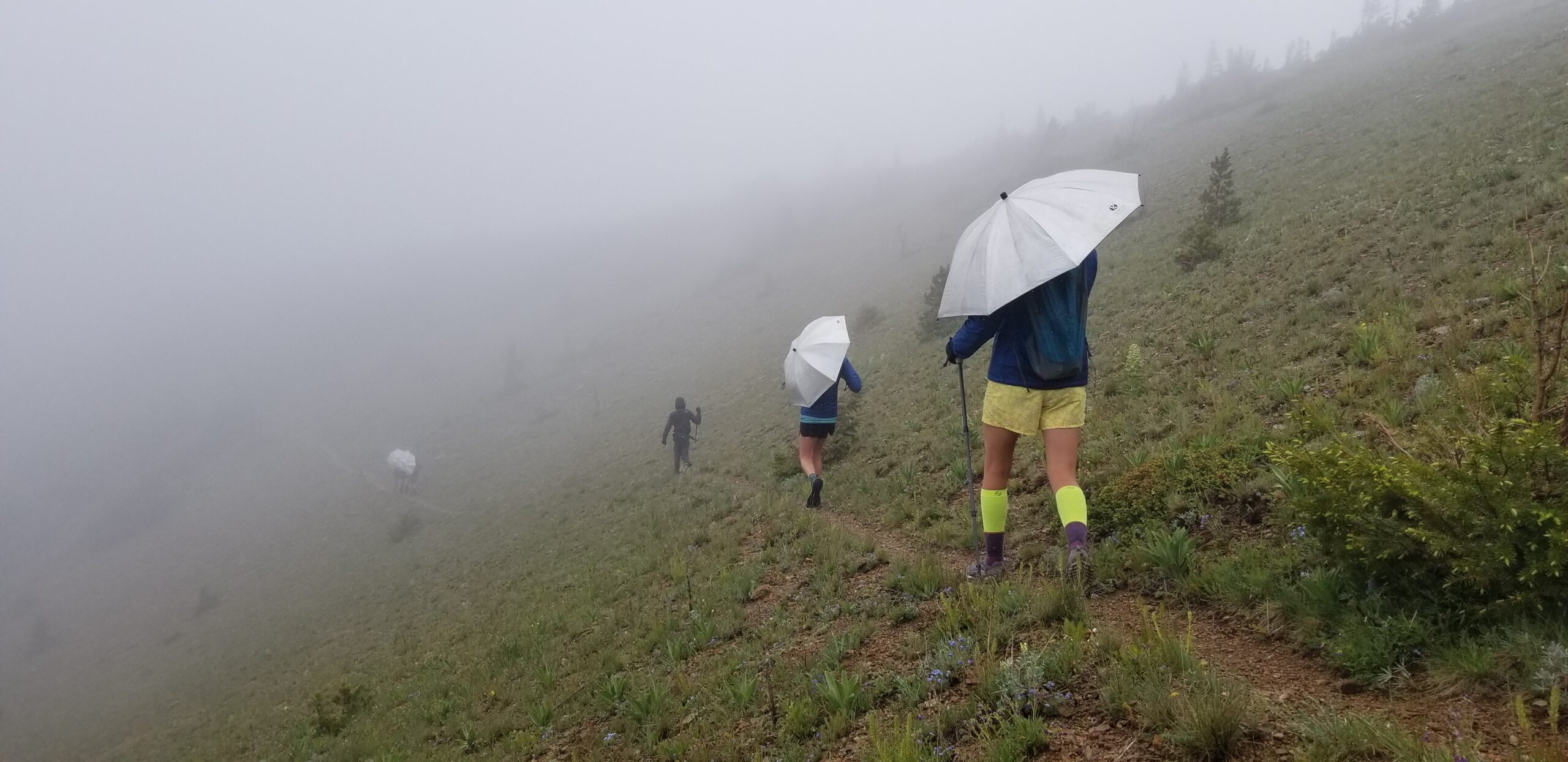Editor’s Note: The Strawbridge family from Lakeland, Fla., is hiking the length of the Continental Divide Trail – all 3,100 miles of it – from Canada to Mexico. Henry Strawbridge, 14, will be providing updates of their journey to Trout Unlimited as they pass through the historic range of seven native trout species. You can track the family and see reports submitted by Henry on this map.
By Henry Strawbridge
We began the next section of the trail at Helena, walking toward Lincoln. Our cousins from Colorado and grandparents walked with us for the first mile and a half.
At the end of their walk, my sister Georgie took some pictures of us all together. We said our goodbyes, and started up the long hill out of Helena. After a good morning of walking we sat down to enjoy our lunch. As we sat there, storm clouds formed above us and started to sprinkle some rain on us. Here we go, the first rain on trail. We hurriedly ate our meals, filled up our water for a 17-mile section, and got out all our rain gear.
That day, it only rained for about six hours after lunch. Aiden, my oldest sister, Ethan, my cousin who is walking with us for six weeks, and I listened to some stand-up comedy to pass the time. When we got into camp, after 18 miles, it was still raining. We spent about five minutes looking for some sheltered areas to set up our tent. Once we found three spots we all started setting up our tents as fast as we could.
Aiden and I, who share a tent together, hid our other gear under the trees while we set it up. The tent we carry is a double walled tent, so, in the rain, after we get the mesh wall up, we rushed to get the rain fly up as quickly as possible to protect the interior.
In our haste, we created a big problem. As I tried to get the poles of the tent attached to the mesh layer, I apparently bent the poles a little too far. The pole snapped!! Panicking, with rain getting into our tent, I ran over to dad to get some tape. He gave me the tape, and Aiden and I tried to fix the broken pole. Finding a good stick we tried to splint the poles with the tape. In the rain, it wouldn’t stick!
“Dad is there any other tape?”
“There’s some Leukotape.”
We tried it, and it worked. We hurriedly got in the tent. Everything we had was damp but not soaked. At least we wouldn’t be too cold.

The next morning the rain subsided. We got up and packed our gear comfortably. The weather forecast for the day said it would rain from noon till seven pm. Around the middle of the morning, we were walking on a dirt road and we saw a giant female moose run across the road. It looked more like a wild donkey to me, but it was a really cool thing to experience.
It isn’t any fun to eat lunch in the rain, so we ate an early lunch at around 10 a.m. Since our stuff was wet from the night before we tried to lay our tents out to dry. The weather forecast was accurate, but unfortunately that day the trail followed a windy ridge the entire time. The views, I’m sure, would have been beautiful if we could see through the clouds, because the trail was right on the top of a ridge.

We ended the day in as low an elevation as we could. I set up my tent IN the trees. The tent set up went a lot more smoothly than the night before. It rained all night. The next morning was rainy and frigid. It was going to be a long day.
After about five miserable miles, there was a huge climb up to Granite Butte Lookout, but everyone was cursing the cold, so we followed a forest road to stay as low, and as warm, as we could.
The road was still windy and conditions so cold that none of us could feel our fingers. After three miles of terrible conditions, we ran into the CDT again at the top of Stemple Pass. Our spirits were lifted when we discovered that if we walked 14 miles more that day, we would be able to spend the night in a house that our grandparents had rented for two days.
We finished the day practically running down the hills to the big white Suburban waiting at Flesher’s pass. It was so warm and clean in there. We arrived at the house dirty and cold. We took showers, watched a movie, and went to bed in total comfort.
We expected the next day to be easy. My grandpa would drop us off at Flesher’s pass and we would slack pack (that means leave most of our gear behind) to Roger’s pass, where he would pick us up again. The crazy weather wasn’t finished with us yet though. We walked at least nine of the miles across exposed ridges in the freezing rain, hail, and snow, driven by 60 mph winds. We had no shelter and no place to retreat. Dad said we could go ahead, and he would stay back with the slower ones, so I jogged and fast-walked at an average pace of four miles an hour.
When we walked down the switchbacks and out of the clouds, there was grandpa’s suburban again.
We arrived back at the house, took more showers, had some popcorn, and played some card games, preparing for the next week. The weather is forecast to change for the better by the time we enter the Bob Marshall Wilderness.
We have 133 miles to walk through some of the most remote and beautiful wilderness in the country. So it’ll be a while before I am in touch.
Until then, Henry.
COVID-19 note: The Strawbridge family anxiously watched as the coronavirus issue threatened their plans to do the CDT this year. After careful consideration the family made the decision to drive to Montana to start the trip to avoid any possible exposure on airplanes. None of the family members are exhibiting symptoms. They have arranged to be completely supported for the first 400 miles of the hike to avoid contact with local communities and will continue with limited contact with the outside world throughout the duration of the trip.



